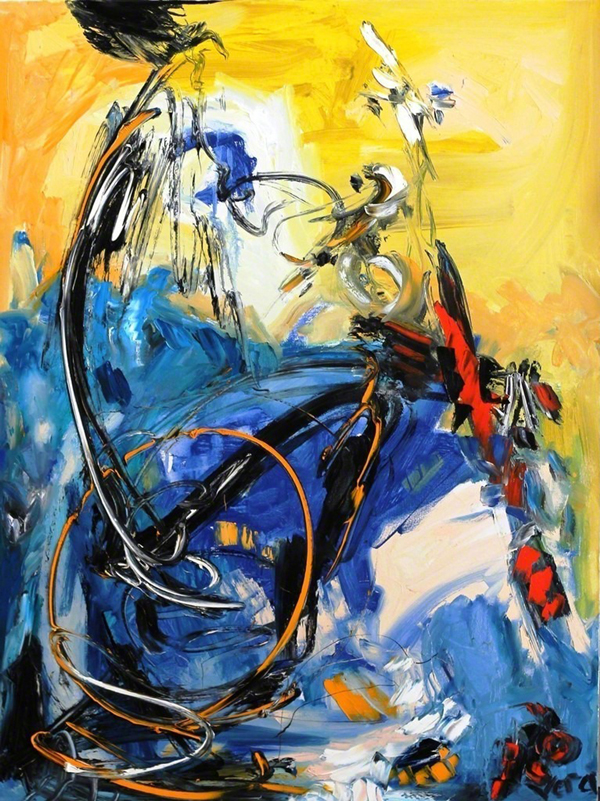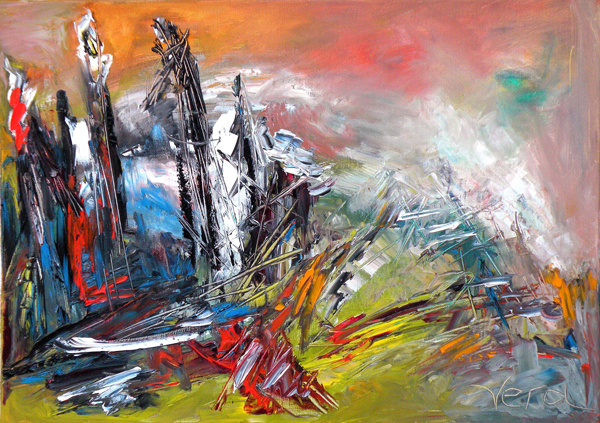Vera Arutyunyan coats her canvases with pigment and passion. For much of her 25-year artistic career, the Armenian-born artist’s bold abstract oil paintings have been expressions of her complex emotions as an immigrant building a new life in the United States. Growing up in the Armenian capital, Yerevan, Arutyunyan excelled in both art and science. While studying geological engineering at Yerevan State University, she enthusiastically painted Armenia’s rocky landscapes. Then, in 1991, with only $27 to her name, Arutyunyan moved to the United States to start a new life. For the last 21 years she has been working for Los Angeles County as an engineer. Although financially secure, she struggled to adapt to her new home. Initially she spoke no English, missed her family and was baffled by aspects of the country’s language, culture and traditions. She turned to painting to express her frustrations and innermost emotions, using color to communicate her despair, joy, love and wonder, in ways that words failed her.
At first she painted with a brush, but after several years, she used just her fingers. “I wanted to touch and feel the color directly,” she explains. “It’s much easier to express my feelings with my hands.” For the last 15 years, she has been diving into the paint and applying it with her hands, letting nothing come between the pigment and her self.

Psychic Connections, 2013, oil on canvas, 40 x 30 in.; private collection, courtesy of the artist.
Approaching a blank canvas in silence, Arutyunyan tunes into her emotions and prepares herself to let them guide her. Picking up a tube of paint, she squeezes a blob of color onto the surface. She uses her fingers to smear it over a small area, thicker at first, then spreading it gradually outward across the blank space. She grabs the next color, applies it beside the first and then blends the two at the edges. Adding more colors, she occasionally uses the mouth of the paint tube to score the pigment and lend structure.
Sometimes, we see a face or a spinning orb emerge. But Arutyunyan’s paintings are more about feeling than seeing; they’re expressions of wonder, fear or exuberance. According to the artist, she paints in a trance-like state, transmitting her emotions and spirituality directly onto the canvas. “Afterwards,” she says, “I am exhausted.” And her compositions possess the raw energy with which she unleashed them onto the canvas.
Over the years, she has been painting less to cope with feelings of cultural isolation and more to express her deep spirituality and contentment with having her family here with her. Now regularly exhibited regionally and internationally, Arutyunyan’s work increasingly exudes the joy and confidence that comes with knowing she is home.



















0 Comments